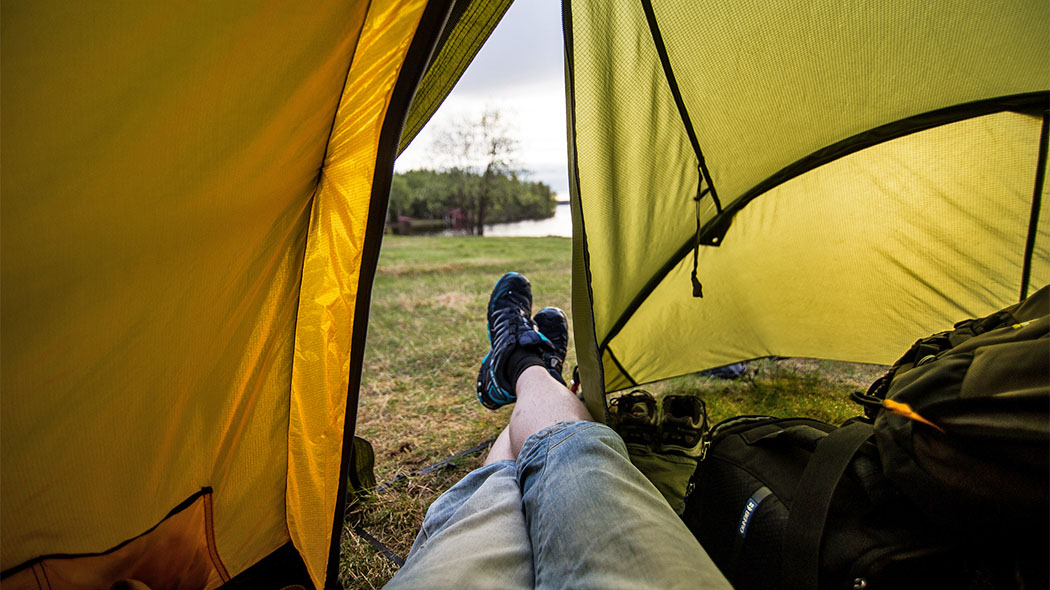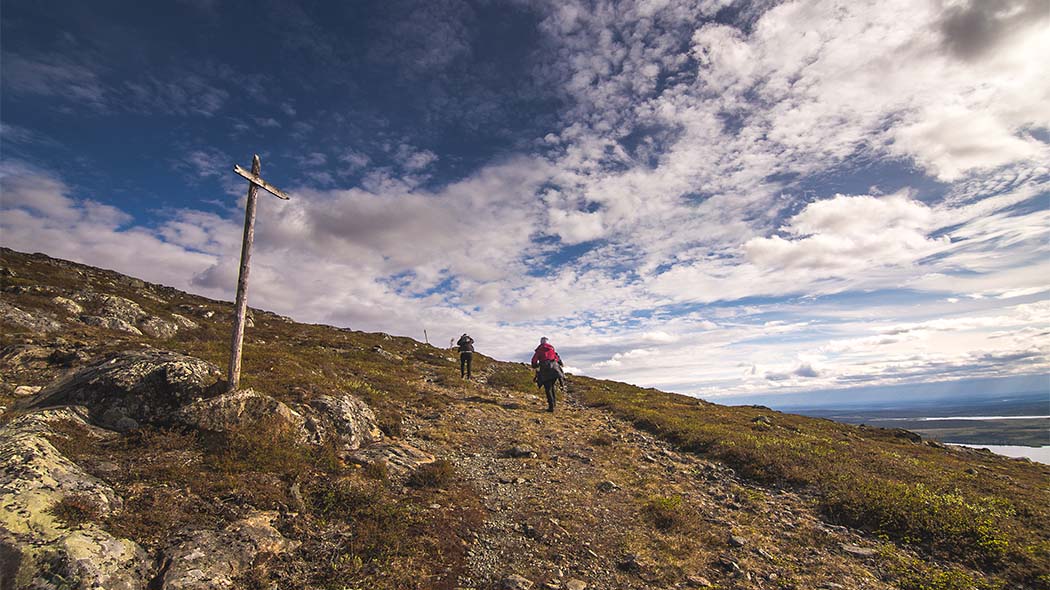Instructions and Rules in Pallas-Yllästunturi National Park

Pallas-Yllästunturi National Park was established to protect the fell section most representative of Western Lapland and the forest and mire areas in the park that have remained in their natural wild state. At the same time, species adapted to the area are protected. The national park has also been established for hiking, research and teaching purposes.
Instructions on Exploring Pallas-Yllästunturi National Park
- Visitors of the national park have to follow the Pallas-Yllästunturi National Park Regulations (julkaisut.metsa.fi).
In Pallas-Yllästunturi National Park, the Following Are
Allowed
- Hiking, skiing, rowing and canoeing except in restricted areas.
- Picking berries and mushrooms except in restricted areas.
Restricted
- In the Recreation Zone of the National Park lighting campfires is only permitted at official campfire sites. Camping is permitted only in the vicinity of wilderness huts, Lapp huts and campfire sites. This also applies to overnight stay in a hammock. In the Wilderness Zone camping is permitted anywhere and campfires may be built close to bodies of water with dry twigs as fuel. See zones from the map appendices (julkaisut.metsa.fi, in Finnish).

- Organizing events for large groups (over 50 persons). A permit is required.
- Entering restricted areas, which have been established to preserve the area's species. Restricted areas are:
- The area around the lower Lake Onnasjärvi and the River Onnasjoki. Entering the area is forbidden from 1.5. to 30.11.
- The Hanhivuoma area. Entering the area is forbidden all year round.
- The areas around Pahakuru and Hannukuru Ravines, Suaskuru Ravine, Haltioletto is forbidden all year round.
- Pyhäjoki and Varkaankuru herb-rich forests. Entering allowed 1.5.–30.11. only on marked trails.
- Mountain biking is allowed on almost all officially marked summer trails with a few exceptions. Mountain biking is not allowed for nature protection or safety reasons at Palkaskero and Keimiötunturi Fells or at Varkaankuru, Tuomikuru and Pirunkuru Gorges. In summer it is forbidden to bike outside the official summer trails. Ylläs Area has a number of marked mountain bike routes, including the new Ylläs - Levi Trail.
- Horse riding and dog sled driving is allowed only for national park co-entrepreneurs on certain routes.
Forbidden
- Letting pets run at large. Pets are allowed in the open wilderness huts, but only on permission of the other hikers in the huts. Dog owners should therefore bring a tent to camp in.
- Taking or damaging trees, bushes, other plants or their parts, or mushrooms other than edible ones.
- Damaging soil or rock, and extraction of earth material or minerals. It is also forbidden to pile up stones on the fells.
- Killing, catching or disturbing wild vertebrates, or damaging their nests.
- Catching or collecting invertebrates.
- Driving motor vehicles, except on roads designated for this purpose.
- Leaving waste in the area, or damaging constructions.
- Lighting open fires even at campfire sites if the forest fire warning is in effect. During the driest season visitors are asked to not light fires even in the fireplaces in Lapp pole tents or wilderness huts, so that the sparks do not set the dry earth alight.
Preparations
A trip is most enjoyable if it is well-planned and the local conditions are not a surprise. It is therefore good to do as much research before hand as possible.

Safety Tips
- Please remember to leave your hike timetable and route with a friend or relative. The area's emergency and rescue services are arranged by law and can be reached by calling the public emergency number. Remember to tell the person that you have returned from your hike, so that they do not send out an unnecessary search party. Emergency and rescue services will bill for unnecessary work. The emergency number, which works throughout Finland is 112!
- If you face an emergency on your hike, e.g. get lost, get injured or observe wildfire, call 112 and report an emergency. More information on how to act in an emergency.
- The weather may change rapidly on the Fells. A quickly forming fog or blizzard may cause dangerous situations.
- In winter, trekking is very demanding. Harsh weather and poor light in the middle of winter cause difficulties. The temperature can drop to -40° and during the darkest part of winter there is sunlight for only a couple of hours. Wind adds severely to the bite of cold weather.
- Orienteering skills are essential. Be prepared for emergencies such as having to camp out in the forest.
- Make sure you pack a first-aid kit.
- Early spring is a popular time for trekking, but even then proper gear is needed.If you have normal cross-country skis, you should stay on maintained trails.
- When following snowmobile tracks be cautious. Getting lost is especially dangerous during winter.
- Hiking in Finland:
Seasons
Autumn comes and leaves start to change colour in early September. This process lasts two to three weeks when they fall from the trees, unless an autumn storm rips them off earlier than usual.
Winter begins at the end of October, but in recent years proper snow has only fallen after New Year. There is usually little snow at the end of the year. Lighting during autumn in the beginning of ‘kaamos' season is strange and ethereal. The rays of the sun pierce the atmosphere at a slant and colour the snow covered landscape all shades from red to blue. The evening and night are lit by the moon and the Northern Lights.

The snow cover is at its thickest in March and April. In some parts the cover can be over a metre thick. The temperature can stay below -20 Celsius for days at a time. Winter trekking and staying overnight in the wild require proper equipment. Early spring is the best ski-season, and usually lasts from the beginning of February to the end of April. The snow may melt earlier some years than others.
Spring begins at the beginning of May and continues to the middle of June. Water from melting snow covers trails making them very susceptible to wear. Hikers are asked to take this into consideration when planning their route and timetable.
Summer begins after Mid-June. Insects such as mosquitoes (Culicidae Family) hatch after Mid-Summer. Sand flies (Simuliidae Family), horseflies (Tabanidae Family) and Ceratopogonidae follow close behind. There have been quite few mosquitoes in recent years and visitors have been able to enjoy Lapland in peace and quiet.
Peak Seasons
The most popular tourist seasons in the National Park are the ski-season from March to April and hiking-season in summer and autumn. The most popular trail in the park is Hetta - Pallas Trail. Reservation for reservable wilderness huts along this trail should be made at least half-a-year in advance. Open wilderness huts are often full during the tourist season. It is therefore good to have a tent with, unless you want to sleep under the stars.

Equipment
When trekking in the National Park visitors should have at least a map, a compass and other equipment needed for outdoor recreation according to the length of their trip. In the Wilderness Zones trekking and outdoor recreation are much more demanding than hiking along marked trails. Wandering off-trails requires hiking experience.
Mobile Phone Coverage
Although Finland has a broad network for mobile phones, there are some areas in the park without signal. There may also be some smaller spots where there is interference. If this happens try to climb to a higher place or go into an open area. It may be worth removing the SIM card from your phone and then trying again to make emergency call. Different phones also differ in their coverage.
We recommend that you keep your mobile phone warm at all times and take along food and drink. Certain phone models do not work when the temperature falls below zero. You should therefore let someone know your planned route. To keep your mobile phone charged, bring along a spare power source, a spare battery or an old phone with a working battery.
Waste Management
Pallas-Yllästunturi National Park is a Hiking without Littering area. The principle of litter-free hiking is simple: hikers should leave no traces of their visits to the natural environment. Biodegradable waste should be placed in a toilet or composter, and small amounts of clean paper and cardboard can be used as kindling in a campfire. Carry all other types of waste away in your rucksack.
Recycling points can be found at Pallastunturi Visitor Centre, Yllästunturi Visitor Centre Kellokas and Fell Lapland Visitor Centre. Glass, metal and problem waste can be sorted into separate containers.
112 Emergency Number
If you have an emergency during your trip, such as getting lost, injured or finding a wildfire, call 112. Read more detailed emergency instructions.

Download the 112 Finland application (112.fi) to your phone. When an emergency call is made through the 112 Finland application, the emergency centre attendant is automatically informed of the caller's location.
It is recommended to keep the mobile phone warm and to bring extra food and water with you. There are many excursion locations with no mobile coverage and some mobile phones does not work in sub-zero temperatures, that is why it is always a good idea to let someone know about your itinerary and timetable.
Avalanche Forecast
Please, check the avalanche conditions before your trip (en.ilmatieteenlaitos.fi)
Outdoor Etiquette

1. Respect nature.
2. Mainly use marked trails.
3. Camp only where it is allowed.
4. Light your campfire only where it is allowed.
5. Do not litter.
For Entrepreneurs
Tourist entrepreneurs operating in national parks or other areas managed by Metsähallitus need a cooperation agreement. A fee is charged for using the routes and service infrastructure for business activities.

